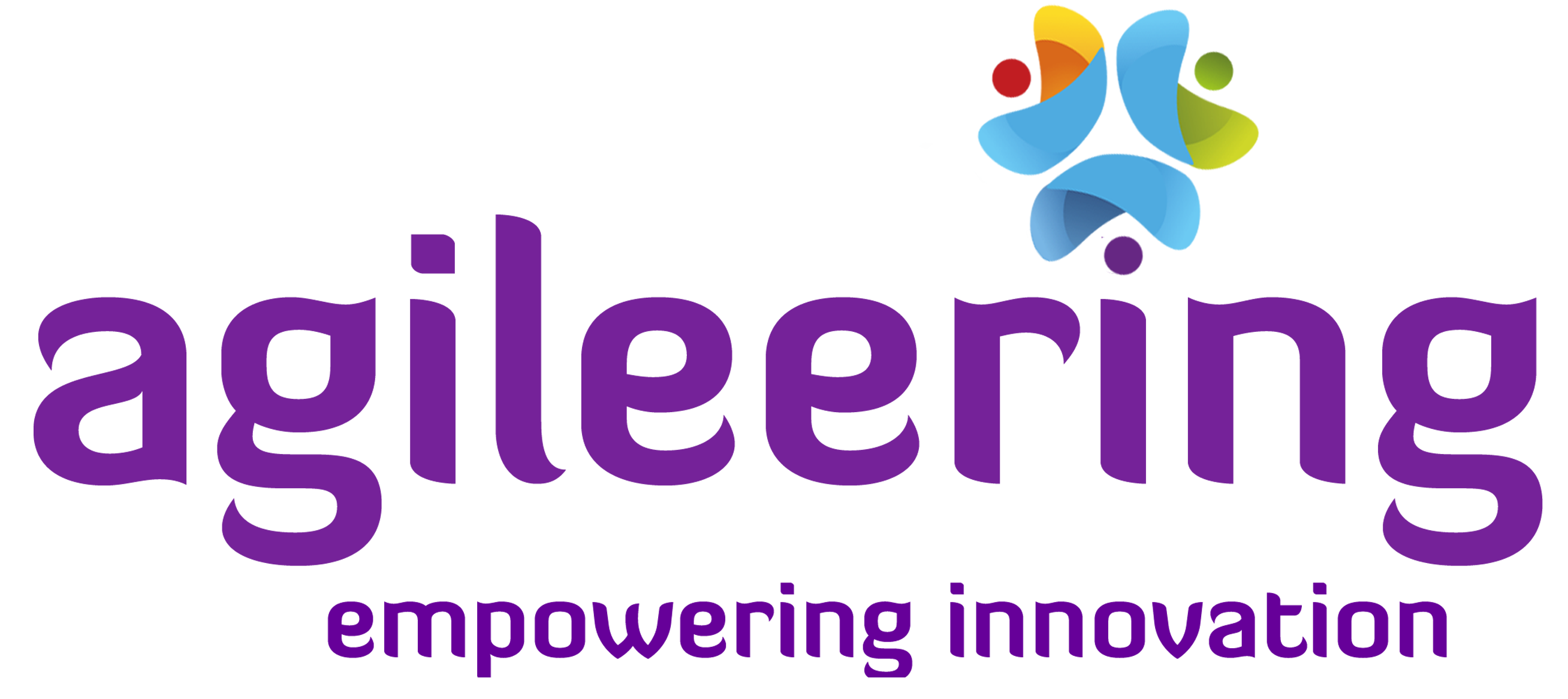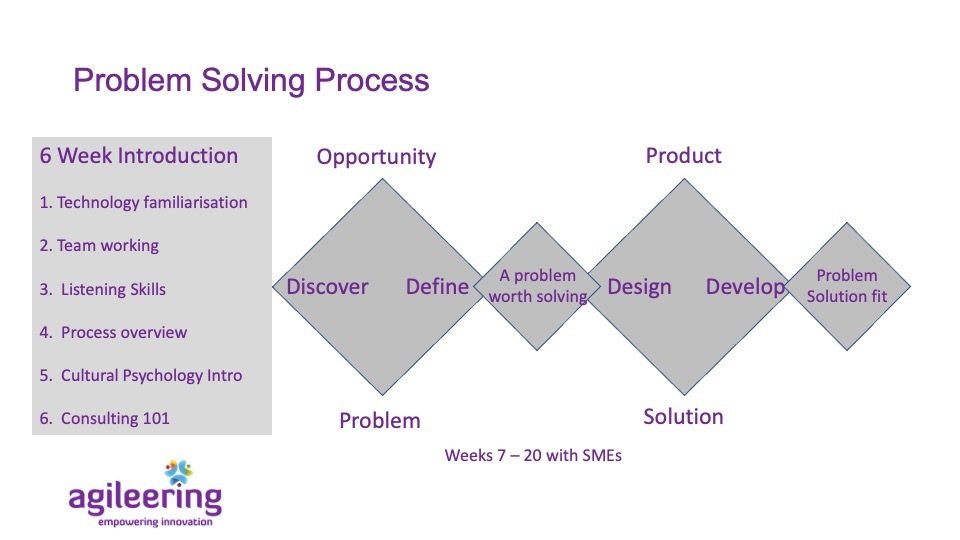
Radical innovation accelerator
See the world differently

Radical Innovation Accelerator Background
The radical innovation accelerator is the culmination of a 10 year journey seeking to understand why innovation was so necessary to most organisations and yet so many found it so challenging that many shied away form it completely.
Researching further revealed how different the practice of innovation was from many of the management disciplines with which it is traditionally associated. Several studies show that the way successful innovators and entrepreneurs think is very different to the way generally taught in business schools. Working with junior management consultants to develop their problem solving skills also highlighted our temptation to rush into solving problems without fully understanding its nature. Unsurprisingly the solutions proposed on these occasions made perfect sense, but never achieved the anticipated benefits because the underlying problem remained unresolved. Then there is the pervasive view that innovation is about science. It is not. Innovation happens when its users, customers or beneficiaries are motivated to adopt new ways of working. Viewed this way, it becomes clear that innovation is more about culture and psychology than science technology or novelty.
The Problem:
The problem with Radical Innovation is that our cognitive processes are just not naturally set up to think the right way to deliver it. Research shows that no radical innovation was ever designed. The result is that we need to break all of our habits and preconceptions if we are to succeed.
The Solution:
The Radical Innovation Accelerator works by adapting well researched tools and techniques to a different way of thinking. A carefully orchestrated sequence of scientific and social modes of thinking helps on the one hand escape the cultural constraints that keep leading back to the incremental and on the other hand ensure that the problems and solutions are adapted to ensure motivation for adoption in the intended context.
Why is Radical Innovation so difficult?
Did you know that many organisations find innovation so difficult that they are too intimidated to even try? The objective of this research study is to change that. By working together to create a new learning and development programme, we aim to upskill tomorrow’s innovation leaders. As a participant in this study, you will be the first students through the programme, but more importantly, we want you to help us make it better.
The trouble with learning to lead innovation is that it is a bit like the proverbial chicken and egg. How can you lead people to a destination, when you are not sure where that destination is because nobody has invented it yet? You can see why people find this baffling. But that is mostly because we treat innovation as a management problem and apply problem-solving methods – we are at A, we need to get to B – how do we do it?
For radical innovation, we don’t know where point B is. If we did, it wouldn’t be radical. But perhaps we better start by explaining a few terms. Most of us will be familiar with incremental innovation; this year’s smartphone is a bit better than last year’s because it has a faster processor, more megapixels on the camera and 5G instead of 4G. But it is still basically the same smartphone, just souped up a bit. Radical innovation is different. A radical innovation would replace the smartphone with something so different that it is really hard to imagine what it might be. Some people refer to this as thinking outside the box. In reality, the means to its creation is already in the box, just a bit hidden. If you think about it, would you give up your smartphone unless you were offered something much better? Of course not. So instead of dreaming up thousands of crazy ways to replace the smartphone, we need to go about it in a different way. The answer is almost certainly not not a smartphone so you can now maybe see why “thinking outside the box” can do your head in.
So what is the solution?
Ahh, you are asking the wrong question, just like most people do. Instead, you should be asking what is the problem? You see if we want people to swap their smartphones for our super-duper new product, we need to know what they really wish they could do that their smartphone can’t. Because that is exactly what our product needs to do. The trouble is, of course, that people are not looking for this product because it has never occurred to them that they can have it. So, you can’t just ask them as Steve Jobs is famously quoted as saying. And that is why the clues are in the box, but they are really hard to spot.
So our research study is about seeing if we can help participants:
- Think about innovation in a completely different way; and
- Use our toolkit and techniques to make what is invisible visible.
The good news is that we think we have figured out how to do this. Much like the original iPhone, it is a brand-new product, but assembled from lots of components that are already known to work. Working with the University of Bristol’s Centre for Innovation and Entrepreneurship and School of Education, we have come up with a programme to do this. We want you to test it for us. But more than that we want you to help us learn how to overcome the mental blocks that so often stop innovation in its tracks. In short, we want to harness your creativity and curiosity to co-produce a radical new approach to learning.
Here is how it will work.
The study itself will last 6 months starting in mid July. The programme lasts around 4 months so there are a few weeks at the beginning to get orientated and a month at the end to gather feedback and see if our efforts have paid off. We will be working with local businesses to introduce innovation into the way they work. Everything we do will be done online, because we don’t want anyone catching coronavirus. In the first few weeks we will sort you into teams, which you will stick with throughout the programme. During the programme, we will give you learning problems to tackle in your teams. We will be recording your interactions to better understand the cognitive processes you go through to find the solution. But we also want you to tell us if there are things you find difficult and even better, if you find a more effective way to solve the problem than the way we show you. We don’t want to embarrass you if you do struggle, so all of the recordings will be destroyed as soon as we have transcribed them. And we will ask you to use nicknames throughout so that none of the material is associated with your real identity. This is to comply with our research ethics code as well as Information Governance. Some of the learning problems will involve working with local businesses to find problems to work on and then adapting solutions to make them as easy as possible for the businesses to adopt. Some of the learning problems will involve independent research, but there are no exams or essays to hand in and get marked. Everything we do is practical and with a clear purpose. We only need you to “work” for 25 hours a week for which you will get paid at the end of each month. We will also agree some time for paid leave and contribute to a pension that you can take with you when you leave.
An overview of the process is below:

Outside the programme, we will mentor you individually and help you to document your learning, because the skills you acquire are very much in demand with employers even if the programme makes them seem routine to you. We will also coach you in the ways of informal job search and to put together a portfolio and optimise your LinkedIn profile showcasing what you can do. As part of the programme, we will encourage you to write and publish blog articles, which again you can post on your social media profiles to raise your visibility. We will provide you with a company email address and access to GSuite, which includes video conferencing tools. With luck, the companies you work with will see your value and take you on. If you get offered a job or for any other reason want to leave, then that is fine. Ideally, we will ask for 2 weeks’ notice and then pay you to the end of the month.
To be eligible for this, you must be in the UK, receiving Universal Credit and aged between 18-24. This is a condition of our funder. To apply, ensure that your work coach refers you and then register your interest below and we will get back to you with next steps. By registering, you consent to take part in the research in line with the details above. You are free to withdraw at any time.
Agileering.co © 2024 Build with Thrive Architect.